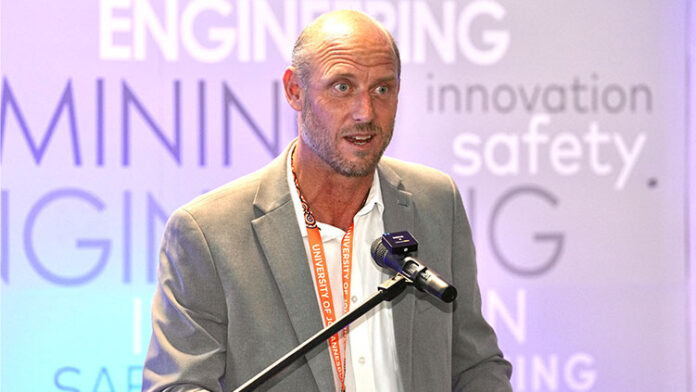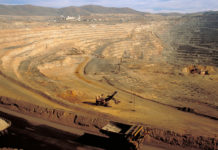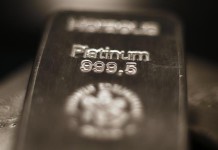
THE rapid recovery in the platinum price – which has risen 84% since April this year to current levels around $1,660 per ounce – has left newly-appointed Sibanye Stillwater CEO Richard Stewart puzzled.
Speaking at the Joburg Indaba conference being in Johannesburg on Wednesday, Stewart commented: “To be completely honest, I do not fully understand what is driving the very short-term fundamentals in the market.
“Where platinum was a year ago was not sustainable on a cost basis. The reason why it has run so hard and so fast particularly over the last three months is a hard one to explain,” he said.
Stewart suggested the price increases were due largely to investor demand and commented: “What we have not seen yet is fundamental industrial demand picking up”.
Looking at the medium term, he said there were several positive fundamental factors one of which was the less-than-feared impact of the tariffs imposed by the US on global trade.
“We thought tariffs would have a significant impact on global macro economics and growth and that would be negative for automobile demand and pgms. That actually has not happened, not to the extent that we expected, and that’s a big positive. That could be an exciting one for the short to medium term.
“So, a combination of a bit of a supply shock coming out of South Africa; secondary supply not coming on line with stocks being tighter, and automobile demand not having fallen off as quickly as we thought are all very positive triggers for the price in the medium term.”
UBS estimated last month current that refined platinum stockpiles among automakers were at their lowest since 2008, equal to 2.9 million ounces (about six months of net demand). There’s also only a month’s supply of palladium in inventory versus its 20 year historical average of about 10 months, it said.
On top of this, EFT inflows have been significant. Owners of platinum ETFs, totalling about 3.2 million oz, may need further upside in the metal’s price before booking profits. Some positions date back to 2015, acquired at more than $1,500/oz in nominal terms, UBS says. It thinks a price of $2,100/oz may be needed before these holdings are mobilised
Said Stewart: “We are pretty bullish on fundamentals for the medium-term – say two to 10 years – and we have a set of assets that are robust.”
Sibanye-Stillwater currently produced around 1.8 million oz annually from its suite of three South African assets. That production was originaly forecast to drop to around 1.2 million oz annually because of limitations on capital expenditure.
“Today we have four brownfields projects that could be developed and, if we were to execute all of these, we could comfortably sustain a profile in the region of about 1.5 million oz for the next 10 to 15 years.”
Stillwater future?
Asked by conference chairman Bernard Swanepoel whether Sibanye Stillwater’s Stillwater mine in the US “was ever going to be viable”, Stewart replied the mine had been paid for already through the one palladium boom they had been through.
“Stillwater is by far the highest grade pgm asset in the world. From a global perspective pgms come from South Africa, Zimbabwe and Russia. That is a significant risk to the world.
“To own the only material asset outside of those three jurisdictions is strategically important. This is an incredibly key strategic asset. We believe that long-term we can get the cost of Stillwater down to below $1,000/oz so that’s a comfortable level for palladium prices long-term through the cycle.
Stewart said the financial support provided to the mine from the US government currently amounted to about $74m a year. This will fall away in 2033.
“It is not our intention to hold an asset that relies on government funding and support. It has to stand up and be competitive in its own right. What happens in 2033? That is essentially a long period of time to set up an asset. Let’s see where we are at that point in time.”











